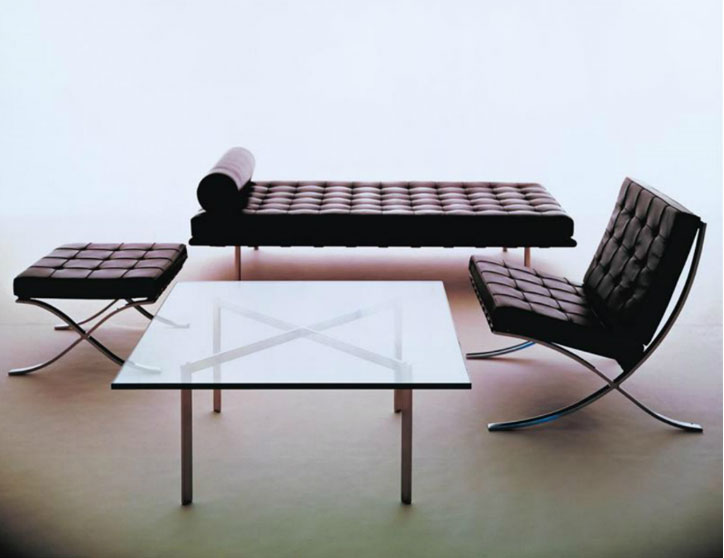Some design pieces have a timeless quality to them: they are immortal, portraying the history of the period when they were conceived, yet they easily blend in with different settings and styles, even the most contemporary ones. We have selected for you some industrial design icons from the past century that still impress.
“Arco” lamp, Achille and Pier Giacomo Castiglioni, Flos, 1962
A true cult item in the field of lighting: the Arco floor lamp designed by Achille and Pier Giacomo Castiglioni for Flos in 1962. Its frame is meant to hint to the shape of a lamppost, a slender element, with a marble base, that illuminates the area underneath it with its beam of light. A lamp with this design is perfect to light up the lounge or reading area in the living room – a sofa, an armchair – or the dining room.
Eames Plastic Side Chair, Charles and Ray Eames, 1959, Vitra
Many on the market have tried to mimic it, but the Eames Plastic Chair is a truly unique design piece made by Vitra since 1950, the year the interior designer duo Charles & Ray Eames presented it in at the New York Museum of Modern Art. There are many versions now, made with different materials, such as the sofa and rocking chair, which still retain the same iconic ergonomic structure. Another brainchild of the Eames’ creative genius is the Lounge Chair: with its footrest, it is a style icon combining design, comfort and quality materials thanks to its leather padding paired with the wooden frame on an aluminium base.
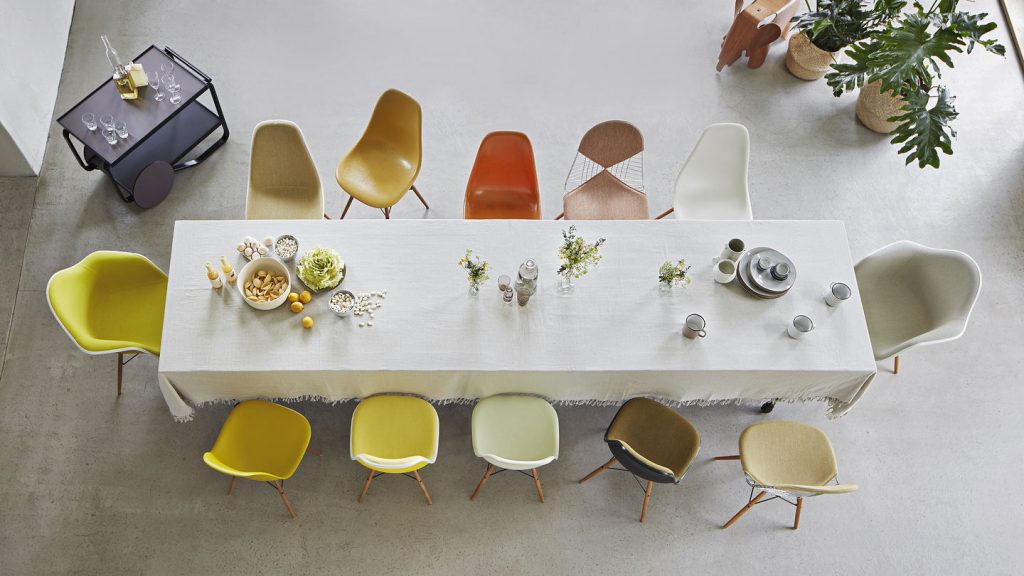
LC4, Le Corbusier, Pierre Jeanneret and Charlotte Perriand, 1929, Cassina
LC4 is the chaise longue par excellence and the result of the creativity of three great designers: Le Corbusier, Pierre Jeanneret and Charlotte Perriand. It was made famous and marketed by renowned Italian industrial design brand Cassina. LC4 is a seating solution that focuses on the person. Its shape fits perfectly the body and organically mimics the space occupied by a person lying down.
Tulip, Eero Saarinen, 1956, Knoll International
Tulip, the table designed by Eero Saarinen, is based on a single brilliant idea: replacing the legs with a linear and elegant chalice-like structure. Indeed, the Tulip table, designed in 1956, was created precisely with the aim of making the dining room cleaner and tidier, eliminating the ‘tangle’ of table and chair legs. Along with the table, the Tulip series also includes chairs and armchairs, and has become a design cult suitable for residential settings as well as offices and professional spaces.
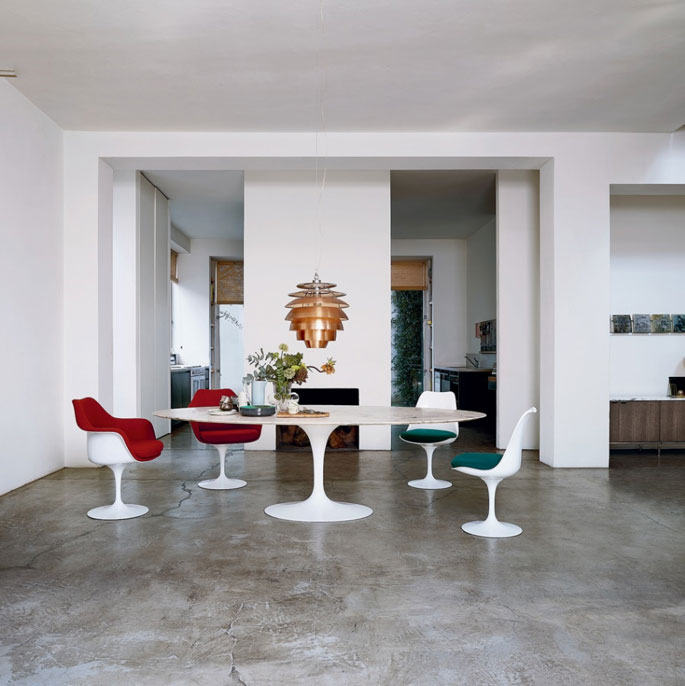
Eclisse, Vico Magistretti, 1965, Artemide
The perfect synthesis of form and function, design and convenience: Eclisse is the table lamp designed by Vico Magistretti in 1965. Its success – a staple in top fashion design museums – is based on its functionality, as the light intensity can be adjusted by turning the lampshade, which ‘eclipses’ the light source.
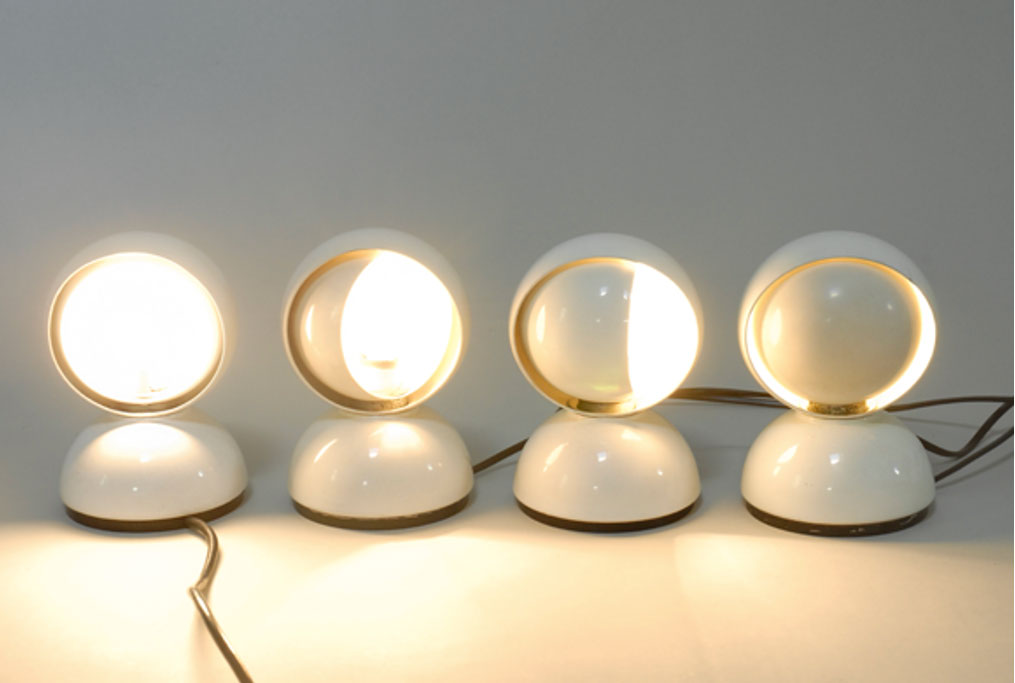
Egg chair, Arne Jacobsen, 1958, Fritz Hansen
The so-called ‘egg chair’ is regarded as one of Arne Jacobsen’s masterpieces because of its typical shell-like shape acting as a sort of private cocoon to relax on one’s own. Indeed, the Egg chair had been designed for the Radisson Sas Hotel in Copenhagen with the aim of offering guests a cosy and private space to relax and sit in a comfortable and informal setting.
Carlton, Ettore Sottsass, 1981, Memphis
A furniture item acting as a partition or a totem bookshelf: Carlton was designed by Ettore Sottsass for the Memphis Group, founded by him together with other architects in 1981. Carlton has a vaguely anthropomorphous shape, reminiscent of a man with his arms open, and stands out for its colourful ‘fitted’ geometries. One of Sottsass’ most iconic pieces.
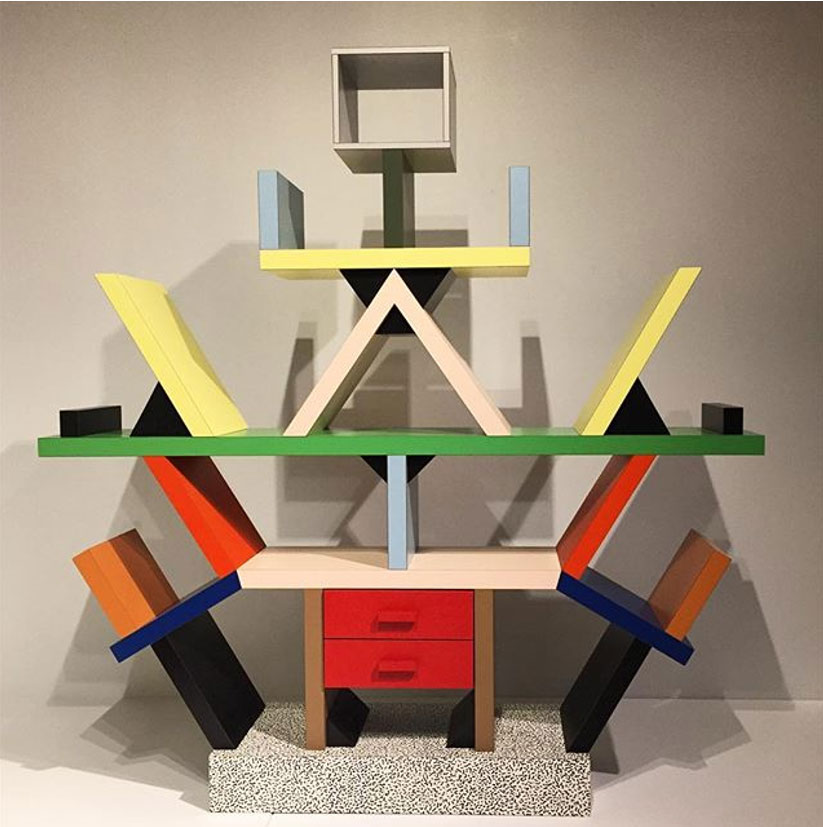
Barcelona chair, Ludwig Mies Van Der Rohe and Lily Reich, 1929, Knoll International
The Barcelona armchair was designed by Ludwig Mies van der Rohe and Lily Reich for the German Pavilion of the 1929 Universal Exhibition in Barcelona. This is a unique item, iconic of 20th-century industrial design and perfectly embodying Van der Rohe’s minimalist motto, “less is more”. The choice of materials such as steel was rather innovative at the time, as was the project that was developed to support serial production: it is still made by Knoll today, also in some variants such as the small sofa or the footrest.
